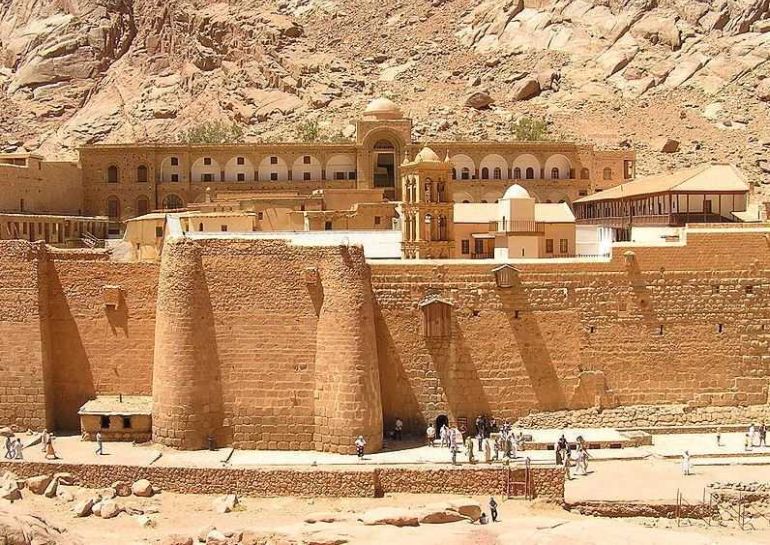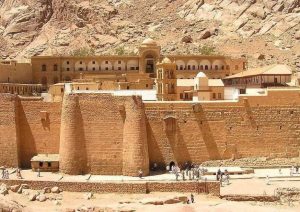Among the libraries that I will visit in my lifetime, Saint Catherine’s Monastery is in the top 10. Founded sometime in 6th century AD (possibly between 548-565 AD), the monastery was probably constructed on the orders of Eastern Roman emperor Justinian I. In fact, according to some traditions, this building was built so as to enclose the older Chapel of the Burning Bush, a structure originally patronized by the mother of Constantine the Great, Empress Consort Helena. Given such ‘antiquated’ credentials, it is generally believed that the king post truss of the Saint Catherine’s Monastery is the oldest surviving roof truss in the world.
As for the ancient Roman monastery’s extant library, the establishments boasts the world’s second largest collection of ancient codices and manuscripts, after just Vatican City. To that end, the most important literary specimen arguably relates to the Codex Sinaiticus — the oldest known complete Bible (circa 345 AD) that was discovered inside the premises of Saint Catherine’s Monastery in 19th century by biblical scholar Constantin von Tischendorf. The impressive collection also includes a range of works composed in Syriac, which in itself pertains to a literary language derived from an eastern Aramaic dialect. The Syriac-based literature entail specimens like a 5th century copy of the Gospels, a copy of the Lives of Women Saints (from 779 AD), and a copy of the Apology of Aristides (the original Greek version is still lost).
Also the monks fearing the upheaval in Egypt are currently converting the texts to digital format to be sure and preserve the library’s knowledge.
Read more at http://www.realmofhistory.com/2016/07/02/world-oldest-library-saint-catherines-monastery/
and at http://world.time.com/2013/07/21/monks-in-egypts-lawless-sinai-hope-to-preserve-an-ancient-library/


